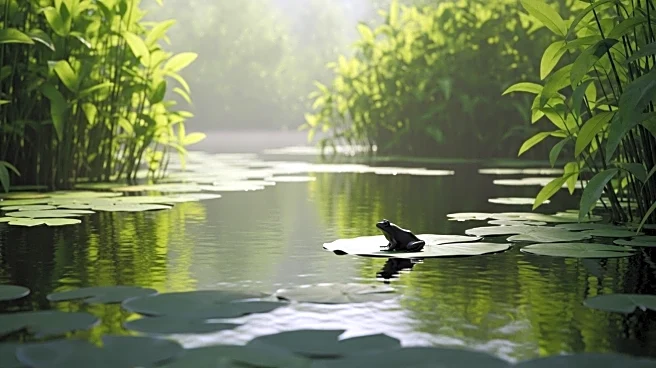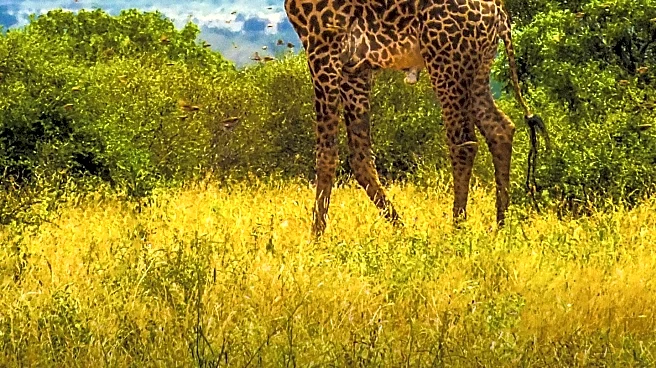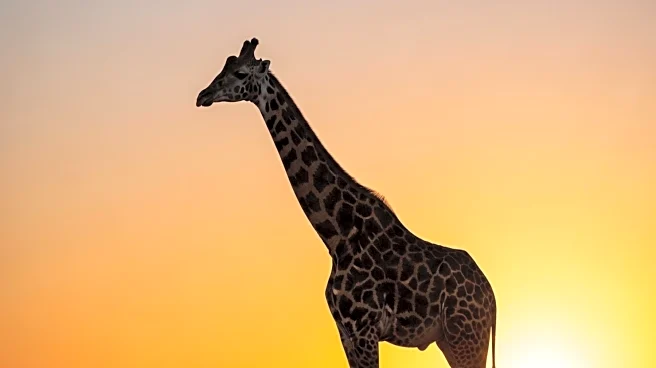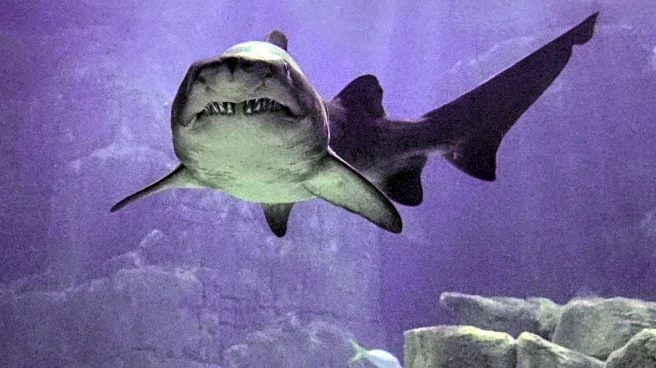What's Happening?
Efforts to restore the red-legged frog population in Southern California have gained momentum with the use of artificial intelligence. The species, which had largely disappeared from the region, is being reintroduced through a cross-border initiative involving the transplantation of eggs from Baja California, Mexico. Biologist Adam Backlin and his team are working to repopulate the frogs in restoration ponds, using AI to monitor the presence of native and invasive species. The initiative faces challenges from habitat loss and invasive bullfrogs, which have decimated the native population. The project is part of broader conservation efforts that include collaboration with Mexican counterparts and the use of advanced technology to track and analyze animal sounds.
Why It's Important?
The restoration of the red-legged frog is significant for biodiversity and ecosystem health in Southern California. The species plays a crucial role in the food chain and its recovery could help control mosquito populations that carry diseases like dengue and Zika. The use of AI in conservation efforts represents a technological advancement that could be applied to other endangered species, offering a more efficient way to monitor and manage wildlife populations. The project also highlights the importance of international cooperation in environmental conservation, as cross-border efforts are essential for the success of such initiatives.
What's Next?
The team plans to continue transporting egg masses from Baja California to Southern California to further boost the frog population. They aim to establish thriving populations on both sides of the border, which could lead to a reconnection of habitats and improved ecosystem health. The use of satellite technology to send real-time audio recordings to scientists' phones is expected to enhance monitoring capabilities, allowing for immediate action if predators are detected. This could further aid in the protection and growth of the red-legged frog population.
Beyond the Headlines
The project raises ethical and environmental questions about the impact of human intervention in natural ecosystems. While the use of AI and cross-border collaboration is promising, it also underscores the need for careful management to avoid unintended consequences. The initiative could serve as a model for future conservation efforts, demonstrating the potential for technology to aid in the recovery of endangered species while highlighting the importance of preserving natural habitats.












